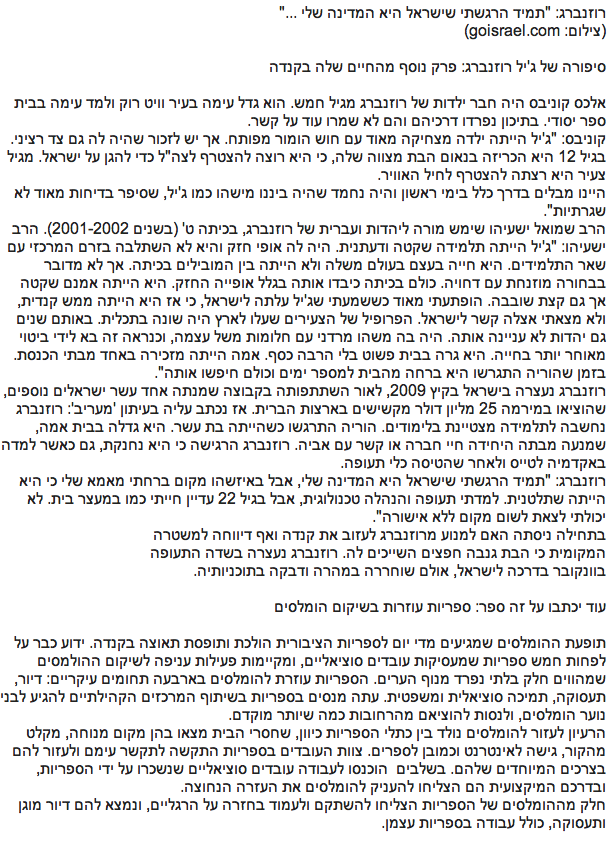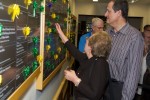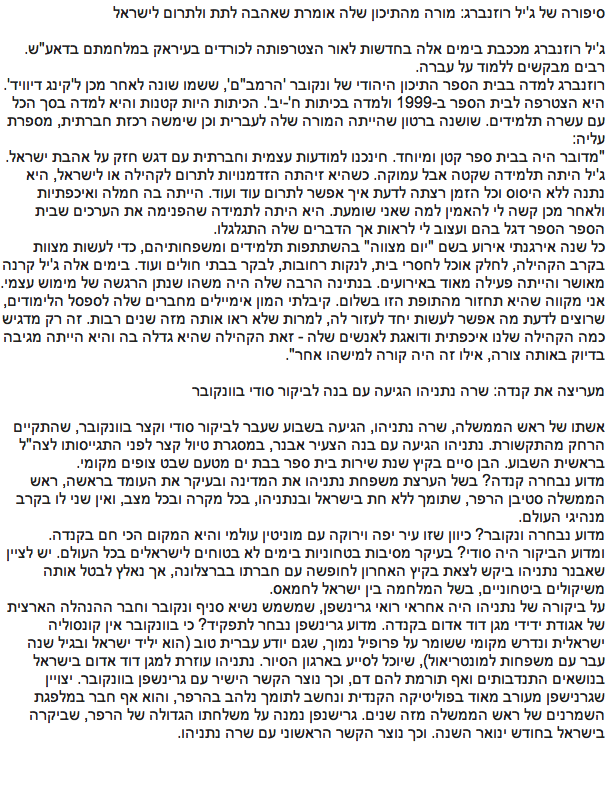Category: News
Higher learning in the Negev
Ben-Gurion University of the Negev. (photo by Dani Machlis)
Approximately 2,000 Ben-Gurion University of the Negev students served during Operation Protective Edge, and another almost 1,000 remained in Beersheva to volunteer in the community. Between July 8 and Aug. 26, all activities, classes and exams were canceled. It was the third time and the longest period that the university has had to close its campus because of rockets from Gaza.
“Tragically, four members of the BGU family fell in battle. Their deaths are the latest permanent and heartbreaking reminder of the enormous price we continue to pay for an independent Jewish state,” wrote Prof. Rivka Carmi, MD, president of BGU, in her Sept. 14 e-message.
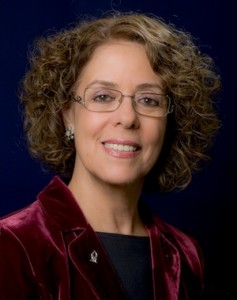
“Other members of the university family, more than I believe we will ever know, served their country, their neighborhoods, their communities and their families by devoting time and energy to helping others endure the more than 50 days of what seemed like never-ending sirens, explosions and the awful anticipation of the next one,” continued the message.
“For many of those affected by the war, the plans they had to work and earn the money needed to cover the costs of tuition and living expenses never came to fruition.”
To help, Carmi asked BGU’s associates organizations to raise $1 million, which they did. As of that message, Canadian Associates of BGU had raised more than $125,000 “for scholarships, with more expected to be donated.” As well, “approximately $120,000 … [was] received to purchase a 3-D electrocardiograph to be used with the wounded soldiers in Soroka hospital.” In August, American lawyer and philanthropist Murray H. Shusterman had pledged $1 million to improve campus safety against rocket attacks.
“We are worrying about our students so that they won’t suffer from the consequences of the university being closed and from the impact of having done extended military duty, while outlining how we need to be prepared for the possibility of more rockets in the future,” Carmi told the Jewish Independent in an email interview. “Basically, we reopened immediately on Aug. 26th to minimize loss of time, so that we wouldn’t have to delay the start of the fall semester. We have also had to institute a number of budget cuts to cover the many unexpected costs of the summer’s closure.”
While the university’s “annual operating budget comes from the government (primarily for salaries) through the Council for Higher Education in Israel, all growth and development comes through fundraising,” she explained. “Growth – in both physical infrastructure and human capacity – are made possible through amazing philanthropists who share our vision.” She voiced appreciation for the Canadian Jewish community’s support.
Carmi is the first woman to have served as president of an Israeli university, and the first as dean of a health sciences faculty. Elected for her first term as BGU president in 2006, she was confirmed for her third term this past May.
“I am sorry to say it is still an accomplishment to be the first woman and, though the situation is improving, it isn’t happening fast enough for me,” she said when asked about how women’s involvement at these levels had changed in the past 15 years or so. “There is a real problem still today to encourage girls to pursue their studies in the sciences. BGU operates a number of programs to encourage girls to expand their horizons through our Access to Higher Education program.”
One of her favorites is Inbal, which was spearheaded by Prof. Hugo Guterman. According to the blurb that accompanies the YouTube video of a group of program participants, “‘Only three to five percent of students in the department of electrical and computer engineering are women. In general engineering, it’s about 25 percent,’ he notes. Three years ago, he, along with BGU and the Beersheva municipality, began a course in robotics for female middle school and high school pupils. Beginning with less than 15 girls participating, this year [2012] nearly 120 girls took part in the course.”
With similar intent – to get more women into higher education – Carmi co-founded with Fatma Kassim the nongovernmental organization Alnuhud, the Association for the Promotion of Bedouin Women’s Education in the Negev. “It was the first such an organization … in the community,” said Carmi. “We realized then that an educated woman has a huge impact on the community and her family. The goal was to ensure that girls can compete on their own level to enter into university. At the same time, the university created what has turned into a very successful medical cadet program, launched by Prof. Riad Agbaria, to find promising Bedouin high school students and help them prepare for university studies in the health sciences.
“People like Shira Herzog (z”l) and the Kahnaoff Foundation have put us in a position to be able to offer scholarships to Bedouin women. When you are out in the Negev, you really feel the difference. There are now many Bedouin women out there making a difference in their communities.”
Two years ago, Carmi led a national committee examining the barriers and possible solutions to the situation. “The findings were conclusive,” reads BGU’s President’s Report 2014, “while Israel graduates a large number of female PhDs, it has far fewer women in the ranks of senior faculty than other European countries.
“This year, there were 216 women among the faculty, not including clinical medical staff, representing 27 percent of the total. The higher one ascends the ladder of seniority, the lower the percentage of women. Today, 40 percent of lecturers, 35 percent of senior lecturers, 19 percent of associate professors and only 16 percent of full professors are women. Of the 38 new faculty members recruited this year, one third are women.
“The average age for a woman completing a doctorate in Israel is relatively high: 37.3 years old. Israeli women also tend to have more children than similarly educated women around the world. The result is that potential candidates for international fellowships are older, with more children and less flexibility than their peers.”
“One of the key stumbling blocks, the report found, is the postdoctoral fellowship, generally done abroad. The average age for a woman completing a doctorate in Israel is relatively high: 37.3 years old. Israeli women also tend to have more children than similarly educated women around the world. The result is that potential candidates for international fellowships are older, with more children and less flexibility than their peers.”
The report listed a few initiatives that had been implemented based on the findings, but it is a continuing process. Just last month, said Carmi, “we organized a national conference to encourage women to a pursue an academic career. More than 350 young academics – men and women – came to Beersheva for the event that included hands-on advice and a panel of young female researchers who have ‘made it’ talking about their experiences. The responses we received from the participants have been overwhelmingly supportive.”
Carmi herself is a renowned researcher, and there is even a medical condition named after her. “During my work as a neonatal physician, I treated babies who were born without skin and with other severe birth defectives,” she explained about how the Carmi syndrome came to be named. “I was highly motivated to find the cause for this horrible condition. The problems we observed had never been seen before so it was decided to name this horrible disease after me. Twenty-five years later, I was fortunate enough to identify the gene mutation that causes it!”
For Carmi, genetics has been a long-held passion. “When I was in school,” she said, “I fell in love with the whole idea of research. My curiosity was captured by genetics and how it all shapes our lives. I decided very early on to become a genetics researcher. I realized that the best way to do this and help people at the same time was to study medicine and combine it with scientific research.”
While time no longer permits Carmi to be actively involved in research, she said, “It was my life, but I am happy in my new career that allows me to make a difference. I moved to the Negev in 1975. Watching it change and grow is very satisfying.”
“We are overcoming budget shortages and the incredible competition with universities around the world to attract the best and brightest young researchers through a special presidential fund…. I have funded researchers in fields that range from Yiddish to cognitive brain sciences.”
One of Carmi’s missions when she became BGU president was to “inject scientific content and research” into the university. On the progress of that mission, she said, “We are overcoming budget shortages and the incredible competition with universities around the world to attract the best and brightest young researchers through a special presidential fund. This allows BGU to offer competitive packages to researchers who might otherwise go elsewhere and opens up new positions as part of a wider agenda to stop Israel’s brain drain. I have funded researchers in fields that range from Yiddish to cognitive brain sciences.”
Carmi has received many honors over her career, including from Canadian organizations, and there have been several collaborations between BGU and Canadian science/academia.
“As a researcher, I had no Canadian contacts, but when I became dean of the faculty of health sciences, I became involved with the Canada International Scientific Exchange Program (CISEPO), which honored me in 2002 for my work. Now, our students participate regularly in their programs,” Carmi told the Independent.
“Over the past few years,” she added, “we have created a number of cooperative agreements with Canadian universities, the most noteworthy is with Dalhousie,” from which she received an honorary doctorate last year. The BGU-Dalhousie memorandum of understanding involves joint research projects, among other cooperative ventures, including the development of an Ocean Studies Centre in Eilat.
“We have had a significant increase in the number of Canadian academics coming to the Negev. The result has been a number of agreements for students and cooperative projects,” said Carmi, who was among those participating in a late-October conference in Ottawa on innovation that “focused on the Canadian-Israeli connection. It was fascinating,” she said, “and is sure to result in further partnerships.”
For more information about BGU, visit bengurion.ca.
Omnitsky’s open for business
Eppy Rappaport welcomes new and old customers to Omnitsky’s new location at 5775 Oak St. (photo by Cynthia Ramsay)
Kreplach. Smoked meat. Tongue. Turkey pastrami. Salami and eggs. If this list of dining options makes your mouth water, read on because the new Omnitsky’s is open for business.
Taking over the location previously occupied by Kaplan’s, Eppy Rappaport has done a gut-renovation of the space in order to create a 21st-century kosher deli. The new Omnitsky’s has actually been open since just before Rosh Hashanah, but only for the retail end of the business. After a number of setbacks, Rappaport was able to cut through the last of the tangles of red tape and, once the licensing came through late last month, he was able to unveil his brand new restaurant and kitchen.
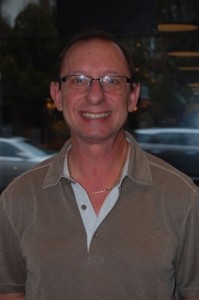
About the delays, Rappaport was pragmatic. “I want it to be right,” he told the Independent. He’s excited to reveal the new space to the public. At long last, he said, his dream is coming true.
The new Omnitsky’s concept is different from the old store on Cambie at 43rd Avenue. There has been a reduction in dry goods available, but a large expansion of the refrigerated and frozen sections of the retail space. The increase in retail and take-out deli products reflects an emphasis on the expanded menu the new Omnitsky’s has on offer.
“The designer and contractor got the maximum out of the space,” Rappaport explained, adding that he hopes the look and layout will foster positive dining and shopping experiences. The deli has a traditional feel, with both food and décor to match. There are tables with banquets along the walls and the fresh deli counter is located at the back by the kitchen.
Rappaport has developed several new products, as well, including an apple turkey sausage that is nitrate-free, along with other sausages he makes himself in his plant on Annacis Island. “We have an expanded product line including fresh baked goods, salads, four soups every day,” he said. There will be the usual chicken soup with noodles or kneidelach, but now you can add kreplach, as well.
Alongside an array of deli sandwiches, there are several hot items on the menu, including kasha and shells, knishes, three kinds of hot dogs with five choices of toppings, and turkey shwarma. Omnitsky’s signature dish? “Deli done the old-fashioned way,” Rappaport said proudly.
Not only has he added variety to the menu, but Omnitsky’s hours are also extended. Monday through Thursday, he plans to serve breakfast, lunch and an early dinner, staying open 8 a.m.-8 p.m. Friday and Sunday, he will be open for breakfast and lunch – with plenty offerings to take home for dinner. To satisfy those who crave breakfast all day, he said that salami and eggs, a classic, is an all-day affair.
Rappaport is thrilled that his restaurant is finally open for business and reaching a new and expanded clientele. The Oak Street location has brought him a much bigger client base, he said. “People remember the old Kaplan’s. I’ve had old Kaplan’s customers returning, wishing me luck and waiting for the restaurant to open.”
Along with the street parking available for much of the day, Rappaport said there are 20 or so parking spots behind the restaurant. He believes that the growth in the kosher meat business is on the restaurant side of things and, with his new and expanded menu and a loyal customer base, he’s ready for things to really take off.
One of the well-loved features of Kaplan’s was the baking, the desserts that reflected an Old World taste and style. Fortunately, Rappaport said that the same woman who baked those familiar treats is working in his new kosher kitchen. This is welcome news for people who are looking to nosh on a shtikl kuchen after a chazerai of smoked meat on rye.
Wait no more, lovers of kosher meat and all that it can become. Omnitsky’s doors are open and the blue tarp that has covered the rear half of the store for months is gone. Whether it’s a trip down memory lane you’re looking for or a new culinary experience with an “old” twist, the only classic kosher deli west of Winnipeg is open for business.
Michelle Dodek is a freelance writer and community volunteer living in Vancouver.
Meeting women in politics
Left to right: Cathy Golden, MP Wai Young, Erin Kizell, Pamela Martin, Dr. Tracy Ames, MLA Selina Robinson, Jes Simkin, Maya Russell, Enav Zusman, Eleanor Millar, MP Dr. Hedy Fry and Karen James. (photo by Lianne Cohen)
On Nov. 13, Canadian Jewish Political Affairs Committee (CJPAC) hosted its second annual Women in Politics event at Congregation Schara Tzedeck, bringing together a multi-partisan group of more than 40 community members of all ages, genders and cities to learn more about what it is like to be a woman in politics.
Inspiring stories were shared and thoughtful questions were posed throughout the evening as the moderators and committee members, some of whom are graduates of CJPAC’s Fellowship program, helped facilitate the conversations.
“Events such as these are a key part of CJPAC’s mandate to mobilize and engage Jewish and pro-Israel Canadians in the democratic process and increase political participation,” said committee member Karen James. “I think that it is especially important to increase the political engagement of women in our community because we often bring a different perspective to the issues.”
Participants gathered in small groups and met with MPs Dr. Hedy Fry and Wai Young, MLA Selina Robinson, Pamela Martin, Maya Russell and Eleanor Millar. These women spoke about life as an elected official or political staffer and the unique challenges often faced by women in this milieu.
“Listening to those wonderful, powerful women talk about the path they took in life and how they ended up where they are today was inspiring and motivational. As a young woman at the beginning of my career, I learned a lot from participating in the event,” said Enav Zusman, one of the moderators.
Erin Kizell, another of the evening’s moderators, noted, “The women who spoke at the CJPAC event really showed why political engagement is important. It doesn’t require the full-time commitment of being an elected official or political staffer – even just a few hours of volunteer work can make a huge difference. What’s most important is that we all get involved to ensure that our voices are heard.”
CJPAC recently opened a new office in Vancouver and will be hosting events into the new year and in advance of the 2015 federal election. CJPAC can offer guidance on how to volunteer on a campaign of your choice, and can organize volunteer training sessions for your staff, students, board or sports team. To learn more, contact Kara Mintzberg, CJPAC B.C. regional director, at kmintzberg@cjpac.ca or 604-343-4126.
Thank you celebration at Louis Brier
Attendees at the Nov. 16 event at the Louis Brier Home and Hospital check out the Gallery of Donors Wall. (photo from Louis Brier Jewish Aged Foundation)
On Nov. 16, the Louis Brier Jewish Aged Foundation honored donors on its Gallery of Donors Wall, located in the walkway linking the Louis Brier Home and Hospital and the Weinberg Residence. The afternoon celebration, which was attended by more than 100 people, was led by event chair Lisa Sirlin, who introduced foundation president Harry Lipetz.
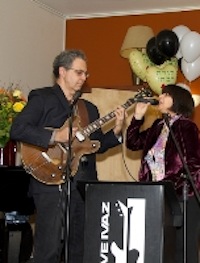
Lipetz spoke of the importance of donors to the vitality of both the Louis Brier and the Weinberg. He also thanked Dvori Balshine, who retired last month from the foundation after 12 years as its director of development.
Louis Brier board chair Arny Abramson thanked all of the donors as well for their continued support and chief executive officer Bob Breen detailed how the funding from the foundation is being used. Breen emphasized that the Louis Brier is the only home in the Lower Mainland that staffs several full-time occupational therapists and physiotherapists, as well as a full-time music therapist.
The Sunday afternoon event hosted donors, friends, family and residents, who enjoyed performances by the JCC Or Chadash dancers, musical interludes from Annette Wertman on piano, and the jazz duo Dave Ivaz and Julie Boton. The audience was in full spirits as they moved from the social hall to the boardroom, where the Zalkow family were honored for their donation towards its renovation and a plaque was unveiled, honoring the Edith Lando Charitable Foundation for its donation of audiovisual equipment.
Attendees then moved on to the Gallery of Donors Wall, where Rabbi Yitzchak Wineberg was on hand to say Shehecheyanu, as guests enjoyed a l’chaim. The wall was marked with green, yellow and purple bows, delineating donors who participated in the Maintain, Sustain and Enhance 2014-2016 campaign, plaques moving to a higher category and new donors on the wall. Final words were given by Balshine, who conveyed her appreciation to all the donors, emphasizing that their support is vital to the Brier and the Weinberg Residence.
A reception at the Weinberg, hosted by Chabad Catering with music by Wertman, Ivaz and Boton, concluded with another performance by the Or Chadash dancers. Guests went home with a chocolate confection donated by Chabad Catering.
For more information, call 604-261-5550 or email foundation@louisbrier.com; more information can also be found at thelouisbrierfoundation.com.
Time for new shofar?
Paul Harnett felt “compelled to understand the nature of the shofar, and what it embodied.” (photo from Paul Harnett)
In 2000, Paul Harnett was living in Vancouver. On the day before a flight to the East Coast for a family reunion, his mother asked him to purchase her a shofar. He found one at Temple Sholom. He didn’t know it at the time, but that purchase would lead him on a journey of personal transformation, turning him – 14 years later – into one of the Lower Mainland’s main shofar producers.
Harnett, 53, who lives in Abbotsford with his wife Iris, is inspired by Judaism but not halachically Jewish himself. When asked what brought him to shofar making, he said, “The shofar picked me, I felt drawn by it.” Moreover, he felt “compelled to understand the nature of the shofar, and what it embodied…. Shofar making requires lots of practise and perseverance and getting the horn blown properly takes many months to perfect the art.”
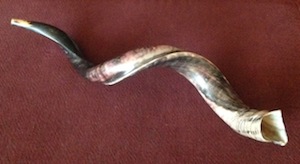
In 2009, an Orthodox Jewish friend from Montreal claimed Harnett’s shofars were not kosher due to the type of horn used. Concerned, Harnett wrote to Rabbi Eliezer Danzinger of chabad.org, who responded, citing Orach Chaim (586:1), that they are indeed kosher because his horns come from kosher animals. With renewed confidence, Harnett committed to producing the highest quality shofars that he could for his customers around the country.
Harnett sources raw horns from Israel, England, Africa and the United States. Each horn has a unique sound and, if properly tuned, can be used as musical accompaniment. Composer Herman Berlinski, for example, and others have explored the dynamics of this ancient instrument.
On two occasions, Harnett has blown the shofar for visiting dignitaries from the Knesset, once in order for them to honor and recognize the Tsawwassen First Nation. Among other events, he also accompanied a blowing of the shofar at a Holocaust memorial hosted by Beth El Synagogue in St. John’s, Nfld.
In addition to the command to blow the shofar on Rosh Hashanah, there are other reasons to own your own. “The shofar is not only a prayer without words,” said Harnett, “it is a visible testament of our identity when displayed as a beautiful ornament in your home.”
As accessories, he makes custom stands out of granite for the shofar, while his wife makes shofar bags from chintz.
Prices for Harnett’s shofars range from $50 to $500, depending on the quality of the horn itself and the time spent making the shofar; shofars can be shipped, upon request. For more information, Harnett will soon have a new website, beharshofars.com.
Gil Lavie is a freelance correspondent, with articles published in the Jerusalem Post, Shalom Toronto and Tazpit News Agency. He has a master’s of global affairs from the Munk School of Global Affairs at the University of Toronto.
New Jewish cemetery
Where the Jewish section is planned at Seaview Cemetery. (photo from Sunshine Coast Jewish Burial Society)
About 18 months ago, a small group of Jewish seniors living on British Columbia’s Sunshine Coast approached the Sunshine Coast Regional District (SCRD) asking that a section of Seaview Cemetery in Gibsons/Roberts Creek be set aside to accommodate Jewish burials. Since then, the Sunshine Coast Jewish Burial Society has been incorporated and, after many discussions and meetings, an area of the cemetery has been designated for such use.
The SCRD has allocated 30 burial plots for burials according to Jewish rites and practices and, this Sunday afternoon, Dec. 7, Rabbi Lindsey Bat Joseph will officiate at the dedication of the site.
The Sunshine Coast Jewish Burial Society was incorporated as a society under the B.C. Society Act on Jan. 7, 2014, and as a nonprofit society on Oct. 1, 2014, with Irene King, Rita Sadlik and Michael Weiner as members of the board. Renee Switzer has also recently joined the board.
During this project, the committee discovered through speaking with many of the Jewish people living in (and moving to) this part of the province that it may help form a more cohesive community, as more people choose to live in the region. The small towns and villages are quite spread out along Highway 101, though residents do get together from time to time to celebrate and mark Jewish occasions or festivals, with the occasional visit from a rabbi.
If there should be a death, it is important to feel a sense of community and for people to come together to sit shivah and support the mourners. The society will form a local Chevra Kadisha and would appreciate help and guidance from other such groups in the Lower Mainland.
In the meantime, for anyone in the Sunshine Coast area on Sunday, the dedication at the cemetery will take place at 2 p.m. For more information (and offers of support), call Sadlik at 604-886-4906.
Sign of significance at Mountain View
Forty-three years after it was dismantled, the Jewish section of Mountain View Cemetery has an arch once more. (photo from MVRP)
A replication of the historic archway for the Jewish section at Mountain View Cemetery went up on Nov. 20, 43 years after the original had been dismantled.
The cemetery, consecrated in 1892, is the only Jewish cemetery in Vancouver. Under the leadership of Shirley Barnett, chair of the Mountain View Restoration Project, it is being restored to reflect its historic significance. Other amenities include a kohanim bench outside the cemetery, two benches inside the cemetery, washing and pebble basins, new pedestrian gates and garden walls. More than 350 headstones are being cleaned and stabilized, and small headstones will be laid for 80 babies buried there.
For more information about the cemetery or the restoration project, contact, Myra Adirim, project administrator, at myra.mvc@gmail.com.
Word choice matters
The Jordan River is “the only river on planet earth that on its good days is a few feet wide, and people claim that it has a bank 40 miles wide.” (photo from Beivushtang via Wikimedia Commons)
Settlements or Jewish communities? West Bank or Judea and Samaria? East Jerusalem or eastern Jerusalem? Those are some of the language choices that journalists covering the Israeli-Palestinian conflict are faced with each day – and those choices should not be taken lightly, experts say.
“It’s the terminology that actually defines the conflict and defines what you think about the conflict,” said Ari Briggs, director of Regavim, an Israeli nongovernmental organization that works on legal land-use issues. “Whereas journalists’ job, I believe, is to present the news, as soon as you use certain terminology, you’re presenting an opinion and not the news anymore.”
“Accuracy requires precision; ideology employs euphemism,” said Eric Rozenman, Washington director of the Committee for Accuracy in Middle East Reporting in America (CAMERA).
At the conclusion of his essay, “Politics and the English Language,” George Orwell argues that writers have the power to “send some worn-out and useless phrase … into the dustbin, where it belongs.” Many Jewish leaders, organizations and analysts wish to do just that with the following terms, which are commonly used by the mainstream media in coverage of Israel.
West Bank: Dani Dayan believes the “funniest” term of all that is used in mainstream coverage of Israel is West Bank. Dayan is the chief foreign envoy of the Yesha Council, an umbrella organization representing the municipal councils of Jewish communities in an area that the Israeli government calls Judea and Samaria, in line with the region’s biblical roots. Yet, media most often use West Bank to describe the area in reference to the bank of the river situated on its eastern border.
“[The Jordan River] is the only river on planet earth that on its good days is a few feet wide, and people claim that it has a bank 40 miles wide [spanning across Judea and Samaria],” Dayan told this reporter. “There is no other example of such a thing in the geography of planet earth. That proves that West Bank is the politicized terminology, and not Judea and Samaria, as people claim.”
Member of Knesset Danny Danon (Likud) has said it’s “ridiculous” that West Bank – a geographic term that once described half of the Mandate of Palestine – has “taken on a political meaning that attempts to supersede thousands of years of Jewish tradition.”
“The correct name of the heartland of the Land of Israel is obviously Judea and Samaria,” he said.
Rozenman, the former editor of the Washington Jewish Week and B’nai B’rith Magazine, draws a distinction between the context of Palestinian and Jewish communities in the area. “If I’m referring to Palestinian Arab usage or demands, I use West Bank,” he said. “If I’m referring to Israeli usage or Jewish history and religion, etc., I use Judea and Samaria. Israeli prime ministers from 1967 on, if not before, used and [now] use Yehuda and Shomron, the Hebrew from which the Romans latinized Judea and Samaria.”
West Bank is fair to use, “so long as it’s noted that Jordan adopted that usage in the early 1950s to try to legitimate its illegal occupation, as the result of aggression, of what was commonly known as Judea and Samaria by British Mandatory authorities,” added Rozenman.
Dayan, meanwhile, prefers to call Palestinian communities in Judea and Samaria exactly that. “The area is Judea and Samaria and, in Judea and Samaria, there are indeed Palestinian population centres, and that’s perfectly OK,” he said. “We cannot neglect that fact, that yes, we [Jews] are living together with Palestinians. And, in Judea and Samaria, there is ample room for many Jews, for many Palestinians, and for peaceful coexistence between them if the will exists.”
Settlements: Judea and Samaria’s Jewish communities are often called settlements, a term that can depict modern-day residents of the area as primitive.
Settlements “once referred in a positive manner to all communities in the Land of Israel, but at some point was misappropriated as a negative term specifically against those Jews who settled in Judea and Samaria,” Danon said. “I prefer to use ‘Jewish communities in Judea and Samaria’ when discussing the brave modern-day Zionistic pioneers.”
Dayan said that “settlements” is not pejorative, but still inaccurate. “It’s a politically driven labeling in order to target those [Israeli] communities,” he said. “Most communities in Judea and Samaria are not different from any suburban or even urban community in Europe, in the United States, in Israel itself, or elsewhere.”
Read more at jns.org.


